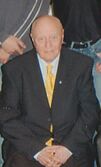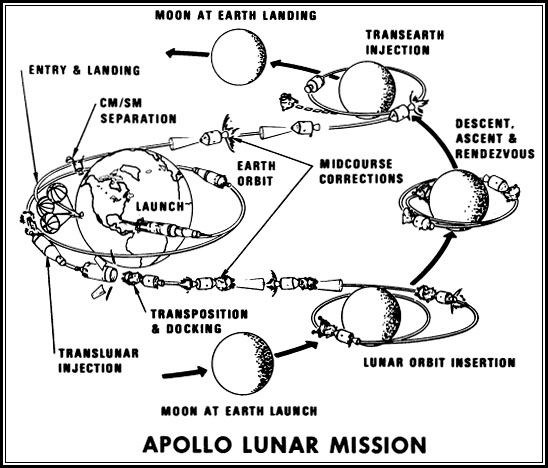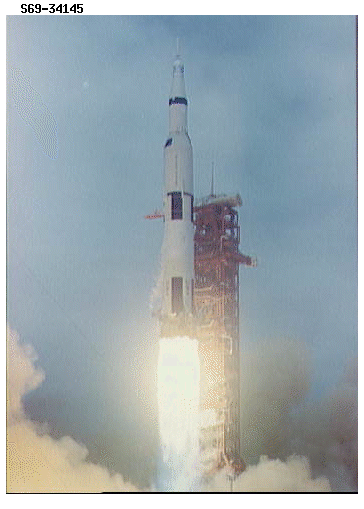 Barys
Uladzimiravich Kit a Belarusian by
nationality, famous American mathematician and rocket scientist, he was in
charge of mathematical support of communications systems for American mission to the Moon
which created a satellite broadband
communications system (48kbs), transmitting live video from the Moon
around the World in July 1969.
Barys
Uladzimiravich Kit a Belarusian by
nationality, famous American mathematician and rocket scientist, he was in
charge of mathematical support of communications systems for American mission to the Moon
which created a satellite broadband
communications system (48kbs), transmitting live video from the Moon
around the World in July 1969.
Barys Kit was born on April 6, 1910 in St. Petersburg, Russia, the son of an employee at the Post & Telegraph Department, who was Belarusian in origin. In 1918, the family moved to Belarus, to the village of Aharodniki - which was his father's home town (now the town of Karelichi, Hrodna Region). Kit studied at the local Polish school there and later at the Navahrudak Belarusian High School, where he graduated in 1928. In 1944, Boris Kit together with his family moved to Germany, first to Offenbach-Lindau in Bavaria, then to Munich. Because he was teaching in Belarusian school during German occupation - he was labeled a Nazi collaborator by Stalinists and had to leave Belarus in 1944.
For three years he worked as a teacher of mathematics at the Munich Ukrainian National School. In addition, he studied medicine at Munich University (1945-1948). In late 1948, Kit moved to the small town of South River in the USA, where he worked in the pharmaceutical industry. During this time he actively helped those fellow-Belarusians who happened to be living away from their homeland. For 25 years he worked in the U.S. space research program. In 1950, Kit settled in Los Angeles, where he worked as a chemist in various companies.
As a mathematician & systems analyst, Barys Kit took part in projects aimed at the development of inter-continental rocket systems. He participated in pioneering research & development work for the first American inter-continental, strategic rocket system NAVAHO at the North American Aviation, Inc. (presently Rockwell International Corporation).
Barys Kit is the author of the first "Rocket Propellant Handbook", published by McMillan in 1960. The book became famous and was read throughout the World. It received many positive reviews and is referenced in rocket science publications even today. From 1963 Kit worked at the Astronautics Bureau of the International Telephone and Telegraph Corporation. It was the time when American astronauts were being prepared to fly to the Moon.
Barys Kit was the corporation president's adviser, and he worked on the mathematical team supporting the success of American missions to the Moon. Looking at that certificate today, it's rather difficult to believe that it all worked 25 years ago, without current day wideband digital techniques, microprocessors to compress color video to a portion of 48 kilobits, or milli-micron wafer devices to do it with. ITT's own corporate brochures carried the achievement of the first wideband data circuit across the Atlantic as an ITT "first" for a number of years.
Barys Kit has always remained a conscious Belarusian. "Everything I did in my life - I did for my homeland and its fame" - he said once.
![]() Barys
Kit bio on A Belarus Miscellany
Barys
Kit bio on A Belarus Miscellany
![]() Barys
Kit bio from Belarusian State Archives
Barys
Kit bio from Belarusian State Archives
![]() Kosmas
Belarusa: Zhytstsiapis Barysa Uladzimiravicha Kita, asvetnika, vuchonaha,
patryiota
Kosmas
Belarusa: Zhytstsiapis Barysa Uladzimiravicha Kita, asvetnika, vuchonaha,
patryiota
![]() Camelot
on the Moon
- the history of communications system supporting American
mission to the Moon
Camelot
on the Moon
- the history of communications system supporting American
mission to the Moon
![]() Kit, Boris & Evered, Douglas S.,
Rocket
Propellant Handbook, Forward by Theodore
von Karman, (Shows Chemistry, History of Manufacturing, Good Fuel and Bad
- Ammonium Perchlorate/Plastic Still will get you to Mars),
New York: The Macmillan Co., 1960, Library of Congress Catalog Card No.
59-9949.
Kit, Boris & Evered, Douglas S.,
Rocket
Propellant Handbook, Forward by Theodore
von Karman, (Shows Chemistry, History of Manufacturing, Good Fuel and Bad
- Ammonium Perchlorate/Plastic Still will get you to Mars),
New York: The Macmillan Co., 1960, Library of Congress Catalog Card No.
59-9949.


